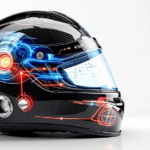Racing enthusiasts know that a helmet is the most critical piece of safety equipment for go-karting, but many overlook when it’s time for a replacement. This guide breaks down the key timelines, warning signs, and expert recommendations to ensure your helmet provides maximum protection when you need it most. Did you know that 87% of racers are using helmets past their recommended lifespan? Let’s dive into when and why you should replace your go-kart helmet!
The Standard 5-Year Replacement Rule Explained
I’ve been racing go-karts for over a two decade now, and the 5-year helmet replacement guideline is non-negotiable for safety. Most manufacturers recommend this timeline because the protective materials—particularly the EPS foam—gradually break down over time, even if the helmet looks perfect externally.
Certification Replacement Guidelines
| CERTIFICATION | REPLACEMENT TIMELINE |
|---|---|
| Snell Foundation STRICT | 5 years from manufacture date |
| DOT | 5-7 years depending on usage |
| ECE | 5 years from first use (max 7 years from manufacture) |
| FIA | 5 years from manufacture date |
For more details on helmet certifications, check out our comprehensive guide to go-kart helmet certification.
Signs Your Go-Kart Helmet Needs Immediate Replacement
Once I noticed a hairline crack in my helmet after a bumpy race and almost convinced myself it was just a paint scratch. Thankfully, a racing buddy pointed out that any shell compromise means immediate replacement—no exceptions.
Quick Replacement Checklist
- Outer Shell: Cracks, dents, deep scratches, delamination
- Interior: Compressed foam, loose padding, deteriorating liner, unusual odors
- Straps/Fasteners: Fraying, corrosion, malfunctioning mechanisms
- Visor: Cracks, deep scratches, broken mechanisms
Impact History: The One-Crash Rule
The one-crash rule is non-negotiable in racing: after any significant impact, your helmet has done its job and needs replacement. During impact, the EPS foam compresses to absorb energy that would otherwise transfer to your skull. Unlike memory foam, this compression is permanent, leaving that area with reduced protection.
What’s tricky is that this damage often happens invisibly. I’ve seen helmets look perfect externally after a crash, while the interior foam had compressed significantly. Even dropping your helmet from waist height onto a hard surface can cause internal damage.
Environmental Factors That Accelerate Helmet Degradation
Living in Florida taught me how quickly environmental factors can destroy a helmet. The combination of sun, humidity, and heat is basically kryptonite for helmet materials.
Environmental Damage Factors
| FACTOR | EFFECTS | PREVENTION |
|---|---|---|
| UV Exposure HIGH RISK | Shell weakening, fading | Store in helmet bag away from sunlight |
| High Heat | Adhesive failure, foam degradation | Never leave in hot car or direct sun |
| Humidity | Interior mold, strap weakening | Dry thoroughly after use |
Manufacturer Warranty vs. Safety Lifespan
There’s often confusion between warranty periods and safety lifespans. Most premium helmet brands offer warranties ranging from 1 to 5 years, but this typically only covers manufacturing defects—not normal wear or material degradation.
Always check the manufacturing date stamped inside your helmet. The 5-year countdown starts from this date, not your purchase date. Looking for a new helmet? Check out our guide to the Best Go-Kart Helmets.
Budget Planning for Helmet Replacement
Treating helmet replacement as an inevitable expense—like tires or maintenance—helps avoid sticker shock when the time comes.
Monthly Savings Plan
| RACING FREQUENCY | MONTHLY SAVINGS | FUND AFTER 3 YEARS |
|---|---|---|
| Occasional BEGINNER | $8-10 | $288-360 |
| Regular | $12-15 | $432-540 |
| Frequent PRO | $20-25 | $720-900 |
Conclusion
Replacing your go-kart helmet at the right time is non-negotiable for racing safety. By following the 5-year rule, inspecting regularly for damage, and understanding environmental impacts on your helmet, you’ll ensure maximum protection every time you hit the track.
No race, practice session, or cost saving is worth risking your safety with outdated equipment. Start planning your next helmet purchase today, and keep the focus on what matters most—enjoying go-karting with proper protection.

Goran, an experienced go-kart racer, fuels GoKartLife.com with his passion and expertise. He offers valuable insights and tips for fellow enthusiasts, fostering the growth of the go-kart community. Join Goran at GoKartLife.com and immerse yourself in this exhilarating sport.
Last modified: April 15, 2025



